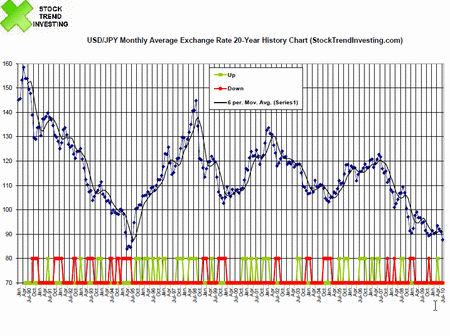
The materiality principle states that all important financial information and matters need to be disclosed in the financial statements. An item is considered material if the knowledge of it could change the economic decision of users of the company’s financial statements. Here’s a helpful grid that shows when an accountant needs to either record a loss with a disclosure note (DN), just a disclosure note, or nothing at all.

As you’ve learned, not only are warranty expense and warranty liability journalized, but they are also recognized on the income statement and balance sheet. The following examples show recognition of Warranty Expense on the income statement Figure 12.10 and Warranty Liability on the balance sheet Figure 12.11 for Sierra Sports. At 31 December 20X1, both cases are deemed to have met the
provisions recognition criteria. As no provision exists in the financial
statements for these two cases, two new provisions should be recognized in the
statement of financial position, for USD 3 million and USD 10 million
respectively. Expenses of USD 3 million and USD 10 million will be recognized
in the statement of financial performance.
Ledger recordings
A contingent liability will then be
disclosed for the possible outflow of USD 2 million. Following this reversal, the correct
accounting entries for 20X1 can then be considered. Each claim will be reviewed on a
case-by-case basis to determine the movements in the case in 20X1 and the
appropriate Umoja accounting entries described. Prior to the end of the year 31 December
20X1, as part of the closing instructions process, the accounting team issues
an information request to the OLA, requesting details on all pending cases(see template
used in section 5 below).

If the future event would result in a resource then it would be considered a contingent gain. Contingent liabilities should be analyzed with a serious and skeptical eye, since, depending on the specific situation, they can sometimes cost a company several millions of dollars. Sometimes contingent liabilities can arise suddenly and be completely unforeseen.
Contingencies
Likewise, a note is required when it is probable a loss has occurred but the amount simply cannot be estimated. Normally, accounting tends to be very conservative (when in doubt, book the liability), but this is not the case for contingent liabilities. Therefore, one should carefully read the notes to the financial statements before investing or loaning money to a company.
Reconciliation in Accounting: Definition, Purposes, and Types – Investopedia
Reconciliation in Accounting: Definition, Purposes, and Types.
Posted: Tue, 25 Jul 2023 07:00:00 GMT [source]
Amount noted above would be reported by OLA
via provisions reporting template which then would serve as a basis for
provisions note disclosure compilation. And since remaining balance of USD 500,000
is already reflected in the OLA y/e submission (USD 6 million), there is no
need to book an entry of USD 500,000 as noted above. In 20X1 an interim payment of USD 1.5
million was paid and an estimated USD 500,000 remains at the end of the
reporting period (this is still a provision rather than an accrual due to the
uncertainty of amount and timing). The USD 1.5 million decrease is confirmed by
the report run from Umoja which showed Dr Expenses and Cr Accounts Payable. The OLA increased the estimate of the probable settlement by
USD 1 million from USD 5 million to USD 6 million.
What is the debit entry?
Just a quick glance on the balance sheet of any publicly-traded company will show that there are various liability accounts. If the warranties are honored, the company should know how much each screw costs, labor cost required, time commitment, and any overhead costs incurred. This amount could be a reasonable estimate for the parts repair cost per soccer goal. Since not all warranties may be honored (warranty expired), the company needs to make a reasonable determination for the amount of honored warranties to get a more accurate figure. These are questions businesses must ask themselves when exploring contingencies and their effect on liabilities.
“Probable” is described in Statement Number Five as likely to occur and “remote” is a situation where the chance of occurrence is slight. “Reasonably possible” is defined in vague terms as existing when “the chance of the future event or events occurring is more than remote but less than likely” (paragraph 3). The professional judgment of the accountants and auditors is left to determine the exact placement of the likelihood of losses within these categories.
Desktop Procedures: Events after the Reporting
The amount is fixed at the time that a better estimation (or final figure) is available. Wysocki corrects the balances through the following journal entry that removes the liability and records the remainder of the loss. A “medium probability” contingency is one that satisfies either, but not both, of the parameters of a high probability contingency. These liabilities must be disclosed in the footnotes of the financial statements if either of the two criteria is true. Since this condition does not meet the requirement of likelihood, it should not be journalized or financially represented within the financial statements. Rather, it is disclosed in the notes only with any available details, financial or otherwise.
- Examples of contingent liabilities include pending lawsuits, contingent rentals, and potential fines or penalties.
- If the contingent liability is probable and inestimable, it is likely to occur but cannot be reasonably estimated.
- Practical application of official accounting standards is not always theoretically pure, especially when the guidelines are nebulous.
- Following is a continuation of our interview with Robert A. Vallejo, partner with the accounting firm PricewaterhouseCoopers.
- Instead, Sierra Sports will include a note describing any details available about the lawsuit.
It is
specified that this should cover all legal cases open at 31 December 20X1, in
addition to those settled or closed in the year. The information request issued for the
recognition of provisions in section 3.1.1 should include a request for updated
information on existing provisions. As noted in section 2.1.3 above, utilizing a provision will result in derecognizing the provision as the
obligations to which the provision relates are settled, usually through the
payment of cash.
IASB publishes amendments to IFRS 3 to update a reference to the Conceptual Framework
The information is still of importance to decision makers because future cash payments will be required. However, events have not reached the point where all the characteristics of a liability are present. Thus, extensive information about commitments is included in the notes to financial statements but no amounts are reported on either the income statement or the balance sheet. Information collected and analyzed for contingent assets is
obtained through the same process described above. Similarly to contingent
liabilities, there is no Umoja accounting entry for contingent assets –
instead, they are disclosed in the notes to the financial statements.
Both represent possible losses to the company, and both depend on some uncertain future event. In this journal entry, lawsuit payable account is a contingent liability, in which it is probable that a $25,000 loss will occur. This leads to the result of an increase of liability (credit) by $25,000 in the balance sheet.
ISC Class 12 Accounts Syllabus 2022 – 2023: Download Class 12th Revised Accounts Syllabus PDF – Jagran Josh
ISC Class 12 Accounts Syllabus 2022 – 2023: Download Class 12th Revised Accounts Syllabus PDF.
Posted: Sun, 12 Mar 2023 08:00:00 GMT [source]
Contingencies are potential liabilities that might result because of a past event. Loss contingencies are recognized when their likelihood is probable and this loss is subject to a reasonable estimation. Reasonably possible losses are only described in the notes and remote contingencies can be omitted entirely from financial statements. Estimations of such losses often prove to be incorrect and normally are simply fixed in the period discovered.
Accounting Treatment of Contingent Assets and Contingent Liabilities in case of Dissolution of a firm
Other the other hand, loss from lawsuit account is an expense that the company needs to recognize (debit) in the current accounting period as it is a result of the past event (i.e. lawsuit). If the contingent liability journal entry above is not recorded, the ABC’s total liabilities and expenses will be both understated by $25,000. For our purposes, assume that Sierra Sports has a line of soccer goals that sell for $800, and the company anticipates selling 500 goals this year (2019). Past experience for the goals that the company has sold is that 5% of them will need to be repaired under their three-year warranty program, and the cost of the average repair is $200. To simplify our example, we concentrate strictly on the journal entries for the warranty expense recognition and the application of the warranty repair pool. If the company sells 500 goals in 2019 and 5% need to be repaired, then 25 goals will be repaired at an average cost of $200.
- Contingent liabilities are those that are likely to be realized if specific events occur.
- Wysocki corrects the balances through the following journal entry that removes the liability and records the remainder of the loss.
- The accounting of contingent liabilities is a very subjective topic and requires sound professional judgment.
- The sales price per soccer goal is $1,200, and Sierra Sports believes 10% of sales will result in honored warranties.
- GAAP is not very clear on this subject; such disclosures are not required, but are not discouraged.
- If a court is likely to rule in favor of the plaintiff, whether because there is strong evidence of wrongdoing or some other factor, the company should report a contingent liability equal to probable damages.
Submissions
are centrally reviewed to ensure that information provided is accurate and
cases are appropriately accounted for in the financial statements (e.g. see template
described in section 5.1 below). A provision should be recognized when the recognition criteria in section 2.1.1
above are met. The sections below describe in detail the
procedures required contingent liabilities journal entry to enter these transactions into Umoja, using the example
of a legal case handled by the OLA to illustrate the accounting entries required. Where a provision is no longer required
(i.e. where the provision recognition criteria are no longer met), it should
be reversed. A provision can be fully or partially reversed
depending on the specific circumstances.